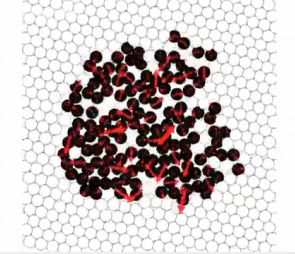Bangladesh's
parliament, meeting demands of protesters thronging the capital,
amended a law on Sunday allowing the state to appeal any verdict in
war crimes trials it deems inadequate and out of step with public opinion.
Tens of thousands of demonstrators jamming central
Shahbag Square for the 13th day burst into cheers amid driving rain as
the assembly approved the changes.
The protesters have
been demanding the death penalty for war crimes after a tribunal this
month sentenced a prominent Islamist to life in prison in connection
with Bangladesh's 1971 war of independence from Pakistan.
The life sentence pronounced on Abdul Quader Mollah, assistant Secretary General of the Jamaat-e-Islami party, for murder, rape and torture had stunned many Bangladeshis.
The amendment will "empower the tribunals to try and
punish any organizations, including Jamaat-e-Islami, for committing
crimes during country's liberation war in 1971", Law Minister Shafique
Ahmed said after the change was approved.
Lawyers said the amendment sets a timetable for the
government to appeal against Mollah's sentence and secure a retrial. The
previous law did not allow state prosecutors to call for a retrial
except in the case of acquittals.
Adoption was quick -- less than a week after the
amendment was approved by the cabinet in the overwhelmingly Muslim
country of 150 million.
OPPOSITION BOYCOTTS PARLIAMENT
Opposition benches were empty as the Bangladesh Nationalist Party (the BNP) of former premier Begum Khaleda Zia and its allies have been boycotting sessions almost since her arch rival, Sheikh Hasina, leader of the Awami League, took office in 2009.
On Sunday, BNP leaders and activists held a rally
outside the party's central office in the capital, calling for the next
parliamentary election in January 2014 to be held under a non-party
caretaker administration.
"The government is trying to use the protests over the
war crime trials to divert attention from critical national issues such
as our demand for election under a caretaker authority to ensure a clean
and unbiased vote," BNP's acting Secretary-General, Mirza Fakhrul Islam
Alamgir, told the rally.
Other BNP leaders urged the demonstrators at Shahbag to
speak out against "corruption, politicization of the administration
ahead of the polls and tampering the judiciary to persecute rivals."
Hasina and Khaleda have rotated as prime minister of
the south Asian country since 1991 and their unending enmity has earned
them a reputation as the "Battling Begums."
The two are likely to face off again in the next polls, party officials said.
The BNP also accuses the prime minister of using the
war crimes tribunal as a weapon against her opponents. Hasina denies the
accusation.
In its first verdict last month, the tribunal sentenced
a former Jamaat leader, Abul Kamal Azad, also an Islamic preacher, to
death in absentia for killing, murder and torture.
Eight other Jamaat leaders, including its current and former chiefs, are being tried by the war crimes
court that Hasina set up in 2010 to investigate abuses during the 1971
conflict. Three million people were killed and thousands of women were
raped.
The government is facing growing pressure from the
protesters to ban Jamaat-e-Islami, the country's largest Islamist party,
and groups linked to it.
Law minister Shafique Ahmed told reporters the government was considering such a ban.
Jamaat activists have called a country-wide strike for
Monday, but demonstrators and many shopkeepers have pledged to resist
any attempt to enforce such a stoppage.
The authorities deployed paramilitary soldiers in the
capital on Sunday evening trying to prevent violence during and ahead of
the strike.
Bangladesh became part of Pakistan at the end of
British rule in 1947 but broke away in 1971 after a war between
Bangladeshi nationalists, backed by India, and Pakistani forces.
Some factions in what was then East Pakistan opposed
the break with Pakistan. Jamaat denies accusations that it opposed
independence and helped the Pakistani army.



 Scans reveal intricate brain wiring
Scans reveal intricate brain wiring







 Cornell
graduate student Jesse Silverberg observed mosh pit activity at a heavy
metal concert, and was inspired to study the movements of the dancers.
Those movements turned out to be a lot like how gas particles move.
Cornell
graduate student Jesse Silverberg observed mosh pit activity at a heavy
metal concert, and was inspired to study the movements of the dancers.
Those movements turned out to be a lot like how gas particles move. 













